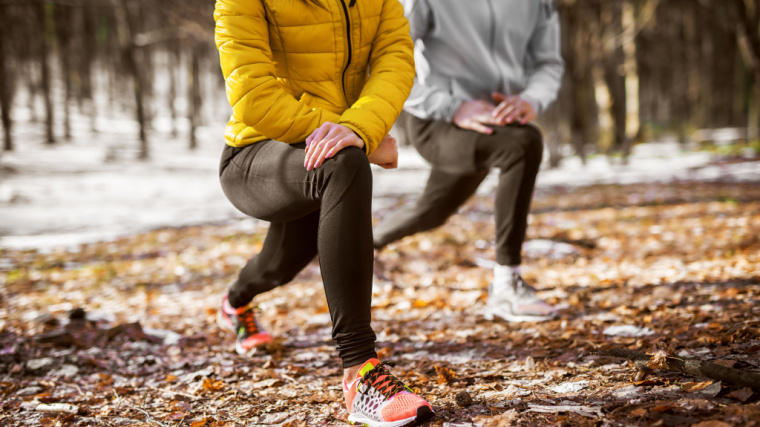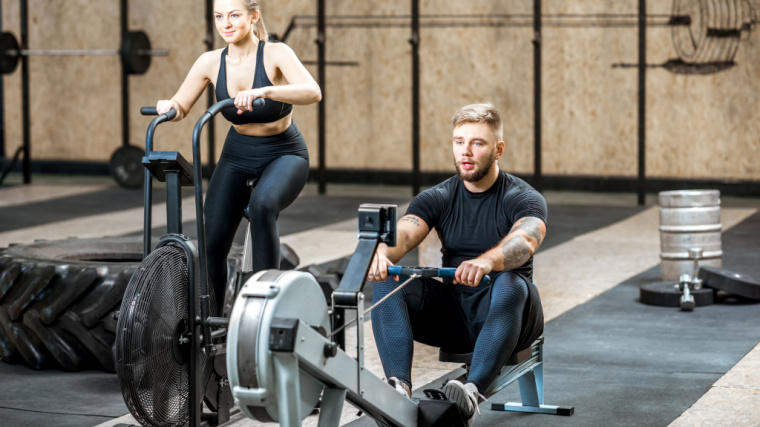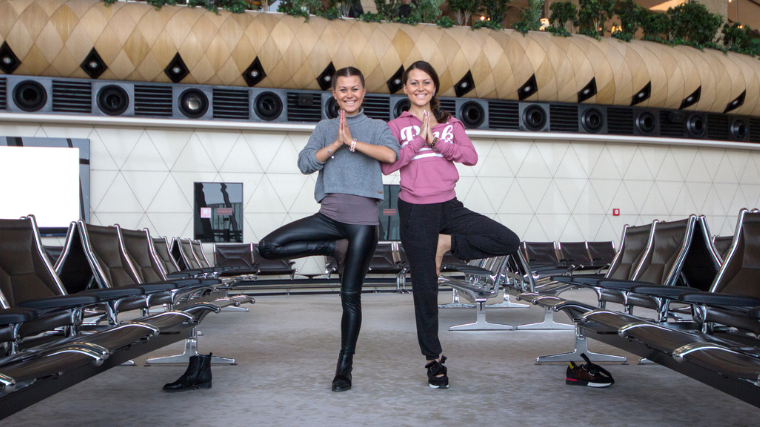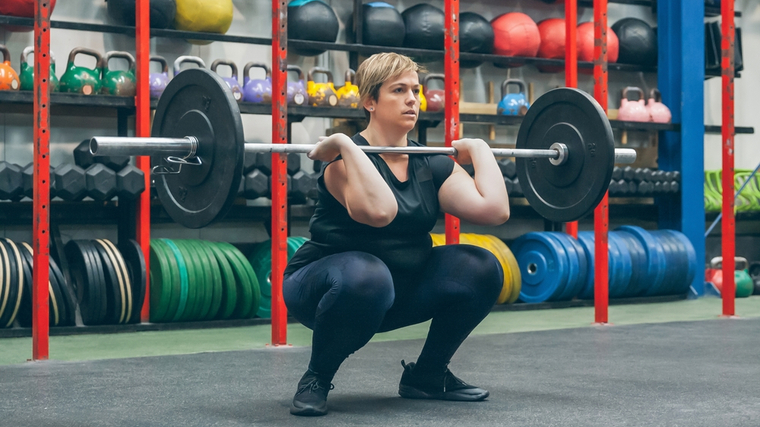The holiday season is a time for joy, celebration, and relaxation. Extra portions of family time, hearty meals, and (frustratingly) long hours in a car seat or airport are all hallmarks of the early winter months. If you’re an avid gymgoer, balancing the festivities with your training can easily add unwanted stress to what ought to be a stress-free period (prickly familial debates at the dinner table notwithstanding).
Luckily, there are more than a few good ways to put your fitness on cruise control during Thanksgiving. You don’t have to consign your gains to melt away just because you’re hitting the road for a family reunion or want to dig into those leftovers the day after.

Here are five foolproof tips for maintaining your fitness throughout the impending chaos of Thanksgiving.
Thanksgiving Fitness Tips
Before You Panic
It’s all too easy to get caught up in the idea that taking even a small break from your regularly-scheduled programming means you’ll have to kiss all your hard-earned gains goodbye.
Before you catastrophize things any further, it’s important to acknowledge that your Thanksgiving plans aren’t likely to detract from your current level of fitness in any meaningful, or noticeable, way. This isn’t conjecture or (figurative) comfort food; it’s a pretty well-supported idea in the scientific community.
Sure, if you bed-bind yourself for a full week or more, there’s a good chance you’ll experience some significant muscle loss. (1) However, that’s not a particularly realistic scenario.

Fortunately, the available scientific evidence seems to indicate that even very low amounts of physical activity (in the absence of your regular training) can go a long way toward preserving muscle for up to three weeks. (2)
So, remember that your holiday plans aren’t going to destroy your progress. At worst, you’re pushing the pause button for a few days. That aside, your best bet for preserving your fitness involves staying active — here’s how to accomplish that in a way that won’t interfere with your itinerary.
Do Bodyweight Exercises During Travel
People tend to travel on and around Thanksgiving (why else would the airport be this crowded, seriously). Whether by plane, train, or automobile, there’s a good chance you’ll find yourself crammed into a not-quite-comfortable seat for an extended period of time.
Spending an extended amount of time locked into a specific posture can play havoc with both your muscles and your sanity. Fortunately, long travel days tend to have plenty of downtime that you can fill with bodyweight training as a way to break up monotony and get some blood flowing.

If you can stomach doing it in public, a short calisthenics-based circuit will elevate your heart rate, engage your muscles, and deliver some much-needed circulation from head to toe to help stave off an achy body.
Give this circuit a go, performing each exercise back-to-back with little to no rest. It should take less than five minutes and you can run through it on an as-needed basis:
Perform an (Active) Stretching Routine
When comparing the effects of static and dynamic stretching regimes, research demonstrates that dynamic, movement-based stretching protocols retain their benefits to blood flow and joint elasticity for a significantly longer period of time than their isometric counterparts. (3)
When you reach the end of your journey, consider resisting the temptation to climb straight into bed and run through a short dynamic stretching sequence instead. It may help alleviate the feeling of being “locked up” after hours and hours of travel.
Indulge in Carbs
However, you may be able to make some small food choices to potentially help stave off unwanted fat gain that tends to accompany bouts of eating above your maintenance calories.
There is a small but potentially compelling body of evidence indicating that a carbohydrate-based caloric surplus can lead to less stored fat than a surplus made up of mostly dietary fat. (4)

Note, though, that this effect has been observed to level out over a longer timeframe and isn’t a way of eating at an energy surplus for prolonged periods without incurring weight gain. With that said, there may be something to it for one or two meals.
So, you can try filling your plate with high-carb portions like mashed potatoes, certain vegetables, rolls or bread, and taking it a little easier on the butter and gravy. As a side perk, stocking up on carbohydrates will also ensure you’re powered up the next time you hit the weights.
Hit a Short, Intense Workout
Holidays are hectic. But if you have the time to slip away from all the action and can hit the gym, a short resistance training session can do wonders for preserving your fitness even if you’re not following your standard routine.
You’ll generally find muscle is much easier to maintain than to gain in the first place. Low-volume, high-intensity protocols are more than sufficient to preserve hypertrophy, even when in an energy deficit. (5) Some literature supposes that even one weekly session can do the trick. (6)

Training to muscular failure isn’t strictly better for muscle growth than more moderate efforts, but it does save time. Instead of performing several hard-ish sets, go to the brink for one single set to save time and preserve gains.
Try this full-body routine on for size, it should take an hour or less:
Go for Long Walks
If you take a multi-day vacation for holiday festivities, you might run the risk of significantly dampening your non-exercise activity thermogenesis, or NEAT. Put simply, NEAT refers to all physical activity you perform that isn’t dedicated exercise; think walking to and from your car, loading laundry, or even brushing your teeth.
Taking a brisk walk right after eating can help speed up digestive processes, and potentially even regulate dietary protein breakdown, in addition to other beneficial metabolic effects. (7)(8)

In broader terms, regular daily walking also kicks up your caloric expenditure and increases your maintenance energy requirements. This allows you to put more calories toward valuable processes like metabolic regulation, muscle repair, and staving off potentially unwanted fat gain. (9)
Walking is also a fantastic group activity, so try making it a family function as well if you can drum up the interest.
Your Takeaways
Thanksgiving is a period of celebration. You shouldn’t be fraught over the prospect of losing your gains just because you’re off the wagon for a couple of days. The most important thing to remember is that time away from the gym, no matter your preferred form of exercise, isn’t a bad thing.
- Science supports the idea that you can go several weeks without dedicated training and still maintain a vast majority of your gains.
- Anything you do “lose” over a short period of time is likely to come back just as quickly.
- If you want to stay active and maintain fitness over the Thanksgiving holidays, find creative ways to inject movement into your downtime.
- Walking with friends or family, periodic bodyweight exercises during travel, or one high-intensity lifting session should be more than enough to keep you on track.
Perhaps most importantly, remember that you’re under no obligation to hit the weights or the track while you’re on vacation. Exercise is meant to add to your life, not compete with it. There’s absolutely no shame in kicking back and enjoying Thanksgiving without the barbell looming overhead.
Feast on Fitness
Your holidays — and the food that comes with them — are meant to be savored. Paying heed to your gains is noble, but don’t let it overtake the festivities. Luckily, you can navigate Thanksgiving and hold onto your progress in the gym at the same time. Some periodic stretching, extra low-key movement throughout the days, and maybe one good workout are all you need to stay on track this season.
References
1. Dirks, M. L., Wall, B. T., van de Valk, B., Holloway, T. M., Holloway, G. P., Chabowski, A., Goossens, G. H., & van Loon, L. J. (2016). One Week of Bed Rest Leads to Substantial Muscle Atrophy and Induces Whole-Body Insulin Resistance in the Absence of Skeletal Muscle Lipid Accumulation. Diabetes, 65(10), 2862–2875.
2. Ogasawara, R., Yasuda, T., Sakamaki, M., Ozaki, H., & Abe, T. (2011). Effects of periodic and continued resistance training on muscle CSA and strength in previously untrained men. Clinical physiology and functional imaging, 31(5), 399–404.
3. Riley, D. A., & Van Dyke, J. M. (2012). The effects of active and passive stretching on muscle length. Physical medicine and rehabilitation clinics of North America, 23(1), 51–x.
4. Horton, T. J., Drougas, H., Brachey, A., Reed, G. W., Peters, J. C., & Hill, J. O. (1995). Fat and carbohydrate overfeeding in humans: different effects on energy storage. The American journal of clinical nutrition, 62(1), 19–29.
5. Murphy, C., & Koehler, K. (2022). Energy deficiency impairs resistance training gains in lean mass but not strength: A meta-analysis and meta-regression. Scandinavian journal of medicine & science in sports, 32(1), 125–137.
6. Trappe, S., Williamson, D., & Godard, M. (2002). Maintenance of whole muscle strength and size following resistance training in older men. The journals of gerontology. Series A, Biological sciences and medical sciences, 57(4), B138–B143.
7. Cruthirds, C. L., Deutz, N. E. P., Ligthart-Melis, G. C., Simbo, S. Y., & Engelen, M. P. K. J. (2021). Walking exercise alters protein digestion, amino acid absorption, and whole body protein kinetics in older adults with and without COPD. Journal of applied physiology (Bethesda, Md. : 1985), 130(2), 435–444.
8. Hijikata, Y., & Yamada, S. (2011). Walking just after a meal seems to be more effective for weight loss than waiting for one hour to walk after a meal. International journal of general medicine, 4, 447–450.
9. Levine, J. A., Eberhardt, N. L., & Jensen, M. D. (1999). Role of nonexercise activity thermogenesis in resistance to fat gain in humans. Science (New York, N.Y.), 283(5399), 212–214.
Featured Image: Dusan Petkovic / Shutterstock
